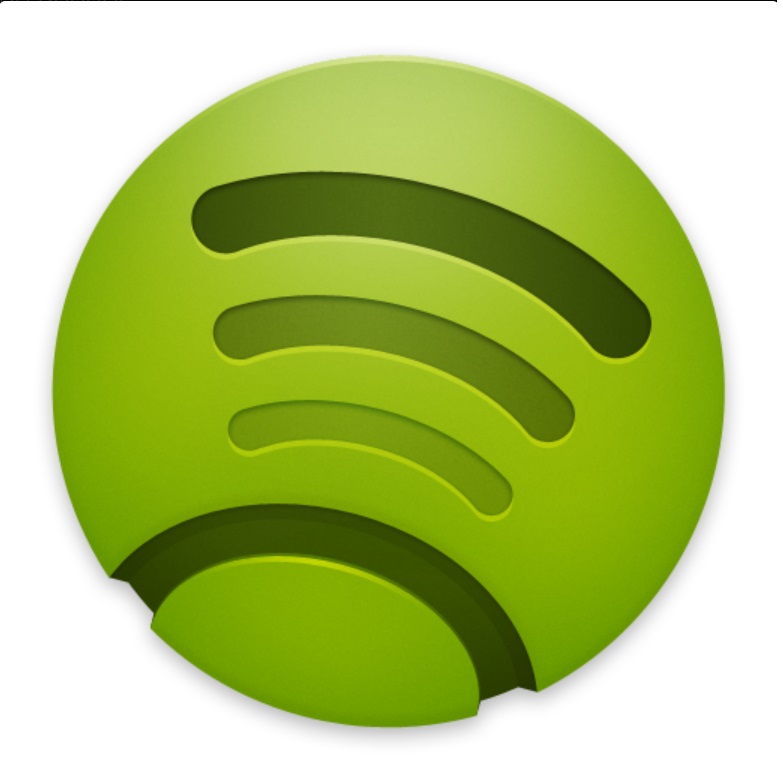 Spotify is the most cherished swedish innovation since ball bearing. While ball bearing have proved itself very useful and lasting, Spotify hasn't really proved anything. The heading for this blog entry is "10 Things I Hate About Spotify". Hate is a strong word and should be used in moderation. The word "about" is put there to have a damping function. However, I do believe hard words are justified in this case, since Spotify despite their motto "Music for everyone" little bearing on music. The unbearable smugness and strive for world dominance are no mitigating circumstances. There are, of course, more than ten things to hate. The list below (no ranking) consists of things that really irritates me. I don't expect people to agree with me. But as Oscar Wilde elegantly put it: “Whenever people agree with me, I always feel I must be wrong.” No comparison in general intended.
Spotify is the most cherished swedish innovation since ball bearing. While ball bearing have proved itself very useful and lasting, Spotify hasn't really proved anything. The heading for this blog entry is "10 Things I Hate About Spotify". Hate is a strong word and should be used in moderation. The word "about" is put there to have a damping function. However, I do believe hard words are justified in this case, since Spotify despite their motto "Music for everyone" little bearing on music. The unbearable smugness and strive for world dominance are no mitigating circumstances. There are, of course, more than ten things to hate. The list below (no ranking) consists of things that really irritates me. I don't expect people to agree with me. But as Oscar Wilde elegantly put it: “Whenever people agree with me, I always feel I must be wrong.” No comparison in general intended.
1. The business model
The compensation to artists is unfair. This is really nothing new, since it always been unfair. Only a small fraction of the sales price of a vinyl, cd or download ends in the pockets of the artist. But revenues from streaming is not even fractions, it's fractions of fractions. The pot should not call the kettle black. Compensation for vinyl, cd or download are paid (almost) directly, while streaming is compensation now and (at least theoretically) in the future. But, the last time I checked we live and pay our bills in the present and not in an unknown future. One simple question: how many streamings are needed to generate the same revenue as from a sale of a vinyl, cd or download? As an educational example you should do the math yourself. A rule of thumb is that 5 000 streamings means $20. Well, thank you Spotify. If you think you're supporting your artist by streaming, well read this article (opens in a new window).
2. The design
This is the ugliest music streaming service ever. Spotify looks like a failed school project. The company brag about how they are recruiting the best and brightest. But aesthetic disposition was obviously not requested. Not only does Spotify have a hideous appearance, the design have many flaws like the tedious navigation and the undeveloped search function. But, the ugliest part is the logotype. Looks like an ecstasy pill, but it's nothing to get ecstatic over.
3. The freemium strategy
You could either pay (premium) or use it for free (freemium). The freemium strategy is also a form of cut-throat pricing strategy to get rid of competition. When something is "free", you should ask yourself: who is paying? It’s the artists that are paying. You may object that nobody held a gun to their heads, but the business deal was close to a deadly threat. Both record companies and artists were caught off guard by illegal downloading and free fall in sales so they signed a bad deal. The business model is based on conversion theory (by providing freemium, users will upgrade to premium). There’s not much support of that. In 2014 there were 40 million users of which 10 million were paying users. In 2015 there were 60 million users of which 15 million were paying users. The ratio of premium/freemium users is the same. Only one out of four is a paying user. Spotify have introduced several limitations in the conditions to push users over to premium. This strategy have failed. The genie is out of the bottle and have no plans of going back. Not even the most degrading, infantile and intrusive advertisment seems to push people over to premium. The freemium model is particularly negative for artists that are more or less unknown and don't sell much. With freemium they sell even less. The thing that upsets me the most is by providing something for ”free” we deprecate all the work of artists. It's basic economic psychology, where "free" means "not worth anything". If you want to read more about this, check out my blog entry (opens in a new window).
4. The paradigm shift
The battle is sometimes labeled the ownership model versus the access model. The old paradigm (ownership model) is based on buying (and owning) physical and digital music. The new paradigm (access model) is based of having access to music (paying or not paying). I don’t see the new paradigm as a progress for humanity. There's little logic in paying for having access to 99.5 percent of the music you don’t have the slightest interest in, instead of paying (and owning) 0.5 percent of the music you have an interest in. Access model is cyber bulimia (see also number 8 on the list). If you want to read more about this, check out my blog entry (opens in a new window).
5. The blind spot(ify)
Despite the pompous company motto "Music for everyone", Spotify doesn't meet the expectations for a music streaming service. The mix ups and confusions of artists and albums are frequent. Spotify obviously lacks a functional database and identifiers. This is compounded by the staff members lack of knowledge of the matter. Knowledge of music was obviously not a requirement in the job description. There’s no shortage of marketers, accountants and programmers. Is it too much to ask for to employ at least one fact-freak? I like to paraphrase a popular assessment: ”Overstaffed, overpaid, over there”.
6. The sound quality
Spotify stream music compressed in 320 kbit/s for (premium) and 160 kbit/s (freemium). Why not offer lossless streaming? Spotify can't blame the bandwidth anymore. For example, both Tidal and WiMP offers lossless streaming. If you want to read more about sound quality, check out my blog entry (opens in a new window) or read about new hi-fi devices in this blog entry (opens in a new window).
7. The absence of interaction
There’s no interaction between artists and users. You can follow an artist or another user, that’s it. Whatever the initial idea of a social network (if there even existed one), this is a failure of biblical proportions. This seems also to be a very sensitive subject for Spotify. It's really the worst of worlds, since Spotify is neither a source of information for users or a promotional platform for artists.
8. The obesity
A good friend of mine (as well as site architect and advisor) recently delivered a nice metaphor. As a Spotify user you get to pick as much candy you want. You’re euphoric in the beginning facing an almost unlimited supply, but after a short while you will only eat the candy you really like even though you have filled your bag with several kilos of candy. The charm of putting together your Saturday candy bag is gone. I like to draw this metaphor a little bit further. In fact, all this candy will make you obese, jaded and also make you feel sick. Spotify encourages shuffle-mode listening. So many playlists, so little thought. Maybe I’m a dying breed, but I think an album should be enjoyed in the way the artist intended.
9. The unsupportive attitude
Some acquaintances who are not familiar with the fact that I hate streaming very deep and intensely (especially Spotify) say ”You can find everything on Spotify”. First, this is not true. They can find everything they want, but a lot of the music that I'm interested in is not available. For the sake of clarity, this is only an observation and not a wish for. Second, I don’t regard Spotify as ”gothic-friendly” or a service for introducing and supporting new artists and bands. The guiding principle is might makes right. The injustices in the "gothic country" genre are numerous, extensive and outrageous. Why should Spotify be an exception? It isn't.
10. The hoax?
Spotify isn't profitable. The economic result is a catastrophe. Minus 182 million dollar in 2014, compared with minus 100 million dollar in 2013. In any other industry this would mean cut-down or shut-down. But, not in this industry which is characterized by boomtown optimism and unbridled expansion. A company which give priority to expansion often meet losses, and if Spotify wouldn’t give priority to expansion there wouldn't be any chance of survival. The battle of streamed music is raging and there will be blood. It's either expand or die. The turnover increased to 1 213 million dollars in 2014, compared with 824 million dollars in 2013. Spotify is estimated to be worth approximately 8 400 million dollars. The revenues are actually increasing, but so also costs. The venture capitalists keep on pumping in money, despite the discouraging figures. The underlying assumption is that Spotify will become very profitable and give them return on investment. However, analysts believe that a business built on freemium can never be profitable. The success factor solely depends on the conversion of freemium users to premium users. But the stagnant conversion rate should cause fear-induced hiccup, when only one out of four is a paying user. Profitability doesn't seem to be just around the corner. What will happen if, and when, the patience of venture capitalists is starting to run out? Spotify could very well then be a new name to add to the list of greatest defunct websites and dotcom disasters.
